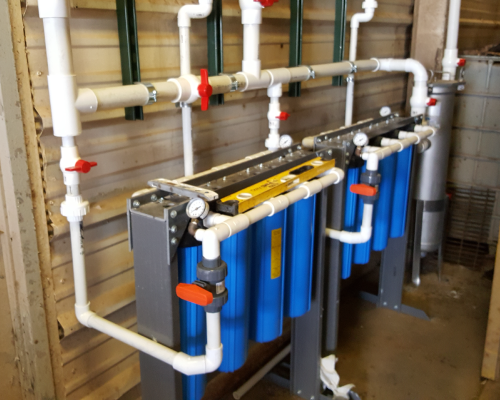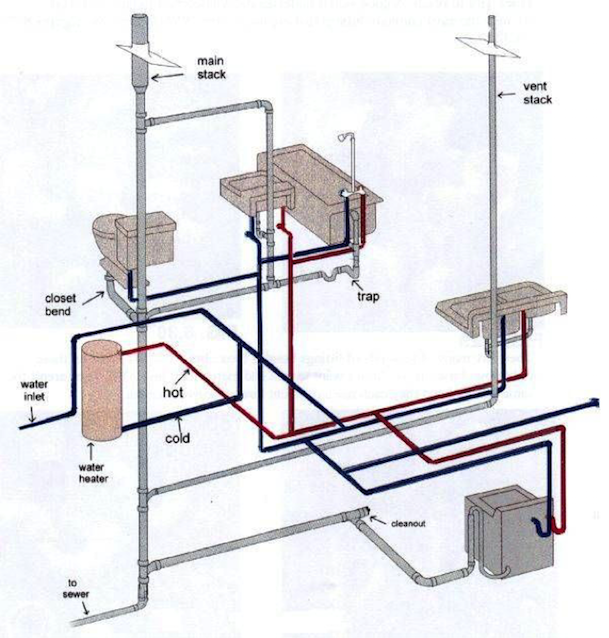What You Need to Know About Your House's Plumbing System Anatomy
Request A QuoteListed here below you might get a bunch of extremely good answers when it comes to The Inner Workings of Your Home's Plumbing.

Recognizing how your home's pipes system works is necessary for every house owner. From delivering clean water for alcohol consumption, cooking, and showering to safely getting rid of wastewater, a properly maintained plumbing system is vital for your family's wellness and convenience. In this detailed overview, we'll explore the complex network that makes up your home's plumbing and deal suggestions on upkeep, upgrades, and dealing with usual problems.
Introduction
Your home's pipes system is more than just a network of pipes; it's a complicated system that guarantees you have access to tidy water and reliable wastewater elimination. Knowing its elements and exactly how they work together can assist you protect against pricey repairs and make certain everything runs smoothly.
Basic Parts of a Pipes System
Pipelines and Tubing
At the heart of your plumbing system are the pipes and tubes that lug water throughout your home. These can be made from various materials such as copper, PVC, or PEX, each with its benefits in regards to resilience and cost-effectiveness.
Fixtures: Sinks, Toilets, Showers, and so on.
Components like sinks, toilets, showers, and bathtubs are where water is utilized in your home. Recognizing exactly how these fixtures link to the pipes system helps in diagnosing problems and preparing upgrades.
Valves and Shut-off Factors
Shutoffs control the flow of water in your pipes system. Shut-off valves are important during emergency situations or when you require to make fixings, permitting you to separate parts of the system without interfering with water circulation to the whole house.
Supply Of Water System
Main Water Line
The primary water line links your home to the metropolitan water supply or a private well. It's where water enters your home and is distributed to various fixtures.
Water Meter and Pressure Regulator
The water meter steps your water usage, while a pressure regulator makes sure that water flows at a safe pressure throughout your home's plumbing system, avoiding damage to pipes and fixtures.
Cold Water vs. Hot Water Lines
Understanding the difference between cold water lines, which supply water directly from the main, and hot water lines, which carry warmed water from the hot water heater, aids in repairing and preparing for upgrades.
Water drainage System
Drain Pipes Water Lines and Traps
Drain pipelines bring wastewater away from sinks, showers, and toilets to the sewer or septic tank. Catches stop sewer gases from entering your home and also catch particles that might trigger clogs.
Air flow Pipelines
Ventilation pipes enable air right into the drain system, avoiding suction that could slow water drainage and create traps to empty. Proper air flow is important for preserving the integrity of your pipes system.
Importance of Correct Drain
Making sure correct water drainage stops backups and water damage. Consistently cleansing drains and maintaining catches can stop expensive repairs and expand the life of your pipes system.
Water Heating Unit
Sorts Of Hot Water Heater
Water heaters can be tankless or traditional tank-style. Tankless heating systems warm water on demand, while containers keep warmed water for instant use.
Just How Water Heaters Link to the Plumbing System
Recognizing exactly how water heaters connect to both the cold water supply and warm water distribution lines aids in identifying issues like inadequate warm water or leaks.
Maintenance Tips for Water Heaters
Consistently flushing your hot water heater to get rid of sediment, examining the temperature setups, and examining for leakages can prolong its lifespan and boost power effectiveness.
Usual Plumbing Concerns
Leaks and Their Reasons
Leaks can take place because of maturing pipes, loosened fittings, or high water pressure. Resolving leaks promptly stops water damages and mold development.
Blockages and Clogs
Clogs in drains pipes and toilets are typically brought on by flushing non-flushable things or a buildup of oil and hair. Making use of drain displays and bearing in mind what drops your drains can stop obstructions.
Signs of Pipes Troubles to Watch For
Low water stress, slow drains, foul odors, or abnormally high water bills are indications of possible pipes problems that must be resolved immediately.
Pipes Maintenance Tips
Routine Assessments and Checks
Set up yearly plumbing evaluations to catch issues early. Look for signs of leakages, deterioration, or mineral build-up in taps and showerheads.
Do It Yourself Upkeep Tasks
Basic tasks like cleansing tap aerators, looking for commode leakages making use of color tablet computers, or insulating exposed pipes in cold environments can protect against significant pipes concerns.
When to Call an Expert Plumbing Professional
Know when a plumbing issue requires professional proficiency. Attempting intricate fixings without correct expertise can cause more damage and higher fixing prices.
Updating Your Plumbing System
Reasons for Updating
Updating to water-efficient components or changing old pipelines can enhance water high quality, minimize water expenses, and boost the worth of your home.
Modern Pipes Technologies and Their Advantages
Discover technologies like clever leakage detectors, water-saving commodes, and energy-efficient hot water heater that can conserve cash and minimize ecological effect.
Expense Factors To Consider and ROI
Determine the upfront prices versus long-lasting savings when considering pipes upgrades. Numerous upgrades spend for themselves with reduced energy costs and less repair services.
Ecological Effect and Conservation
Water-Saving Fixtures and Devices
Mounting low-flow taps, showerheads, and commodes can dramatically lower water use without giving up efficiency.
Tips for Decreasing Water Usage
Simple practices like repairing leakages promptly, taking shorter showers, and running complete tons of laundry and meals can conserve water and reduced your utility costs.
Eco-Friendly Pipes Options
Think about sustainable pipes materials like bamboo for flooring, which is durable and eco-friendly, or recycled glass for kitchen counters.
Emergency Preparedness
Actions to Take During a Plumbing Emergency situation
Know where your shut-off valves lie and exactly how to turn off the water system in case of a burst pipe or significant leak.
Relevance of Having Emergency Situation Contacts Convenient
Maintain contact details for regional plumbers or emergency situation solutions readily offered for quick feedback throughout a plumbing dilemma.
Do It Yourself Emergency Fixes (When Applicable).
Momentary solutions like utilizing air duct tape to spot a leaking pipe or positioning a bucket under a leaking tap can minimize damage until an expert plumber shows up.
Conclusion.
Comprehending the makeup of your home's plumbing system equips you to maintain it successfully, conserving time and money on repair services. By adhering to regular maintenance regimens and staying notified concerning modern-day plumbing technologies, you can ensure your plumbing system operates effectively for several years ahead.
HOW YOUR PLUMBING SYSTEM WORKS
Which Pipes Do What?
Blue lines = fresh water supply entering the building
Red lines = hot water supply entering the building
Grey lines = pipes carrying waste away from the building and venting pipes carrying gases away from the building (through the roof)
YOUR MAIN PLUMBING SYSTEMS
There are two main plumbing systems that support your home s basic plumbing needs one that brings clean water into your home, and one that sends dirty water away from your home. Connected to the toilet, bath, shower, and other faucets in your home, these two systems keep your water flowing in the right directions.
ACCESSING FRESH WATER
Fresh and clean water is brought into your home through the main water supply line . Filtered through one pipe, this water is pressured to flow into the various fixtures in your home at any given time.
This water can be sourced from a well located on your property, a pond or river (mostly cottages), or, as in most cases, from the city s municipal water treatment centre. However, it is important to note that water that is untreated, such as the water siphoned from ponds or rivers, may not be safe to drink. Personal water supplies always need to be treated for hardness and contaminants before consumed.
MUNICIPAL WATER SUPPLIES
Improve taste and odour
Remove sediment
Eliminate hardness
Reduce chlorine
COLD WATER SUPPLY VS. HOT WATER SUPPLY
Cold water flows into your home or building through the service line, which then distributes hot or cold water to your fixtures. This line is most commonly run through a central column that runs floor to floor. Hot water runs in short and straight pipes as the longer the pipeline, the more heat that will be lost in the transfer. Having shorter pipes also allows residents to access hot water more quickly.
WASTE WATER SYSTEM
Your wastewater system is divided into two parts pipes that send wastewater away from your home and venting pipes that send sewer gas away from your home. Sewage water travels through pipes that flush the water and waste towards local sewers that are operated and managed by your city or town. Most sewer systems rely on gravity to move the wastewater to where it needs to go.
The further away from your toilet or sink, the larger wastewater pipes become. This allows for waste to be disposed of from various parts of your home or business at once without pipe blockages. The angle and flow of these pipes are also essential for keeping your waste pipes clear of build up.
https://harrisplumbing.ca/how-your-home-plumbing-system-works/

HOW YOUR PLUMBING SYSTEM WORKS
Which Pipes Do What?
YOUR MAIN PLUMBING SYSTEMS
There are two main plumbing systems that support your home s basic plumbing needs one that brings clean water into your home, and one that sends dirty water away from your home. Connected to the toilet, bath, shower, and other faucets in your home, these two systems keep your water flowing in the right directions.
ACCESSING FRESH WATER
Fresh and clean water is brought into your home through the main water supply line . Filtered through one pipe, this water is pressured to flow into the various fixtures in your home at any given time.
This water can be sourced from a well located on your property, a pond or river (mostly cottages), or, as in most cases, from the city s municipal water treatment centre. However, it is important to note that water that is untreated, such as the water siphoned from ponds or rivers, may not be safe to drink. Personal water supplies always need to be treated for hardness and contaminants before consumed.
MUNICIPAL WATER SUPPLIES
COLD WATER SUPPLY VS. HOT WATER SUPPLY
Cold water flows into your home or building through the service line, which then distributes hot or cold water to your fixtures. This line is most commonly run through a central column that runs floor to floor. Hot water runs in short and straight pipes as the longer the pipeline, the more heat that will be lost in the transfer. Having shorter pipes also allows residents to access hot water more quickly.
WASTE WATER SYSTEM
Your wastewater system is divided into two parts pipes that send wastewater away from your home and venting pipes that send sewer gas away from your home. Sewage water travels through pipes that flush the water and waste towards local sewers that are operated and managed by your city or town. Most sewer systems rely on gravity to move the wastewater to where it needs to go.
The further away from your toilet or sink, the larger wastewater pipes become. This allows for waste to be disposed of from various parts of your home or business at once without pipe blockages. The angle and flow of these pipes are also essential for keeping your waste pipes clear of build up.
https://harrisplumbing.ca/how-your-home-plumbing-system-works/
We are very enthusiastic about The Inner Workings of Your Home's Plumbing and I am hoping you liked the blog posting. Are you aware of somebody who is involved in the subject? Why not share it. Thanks a lot for going through it.
Request Service